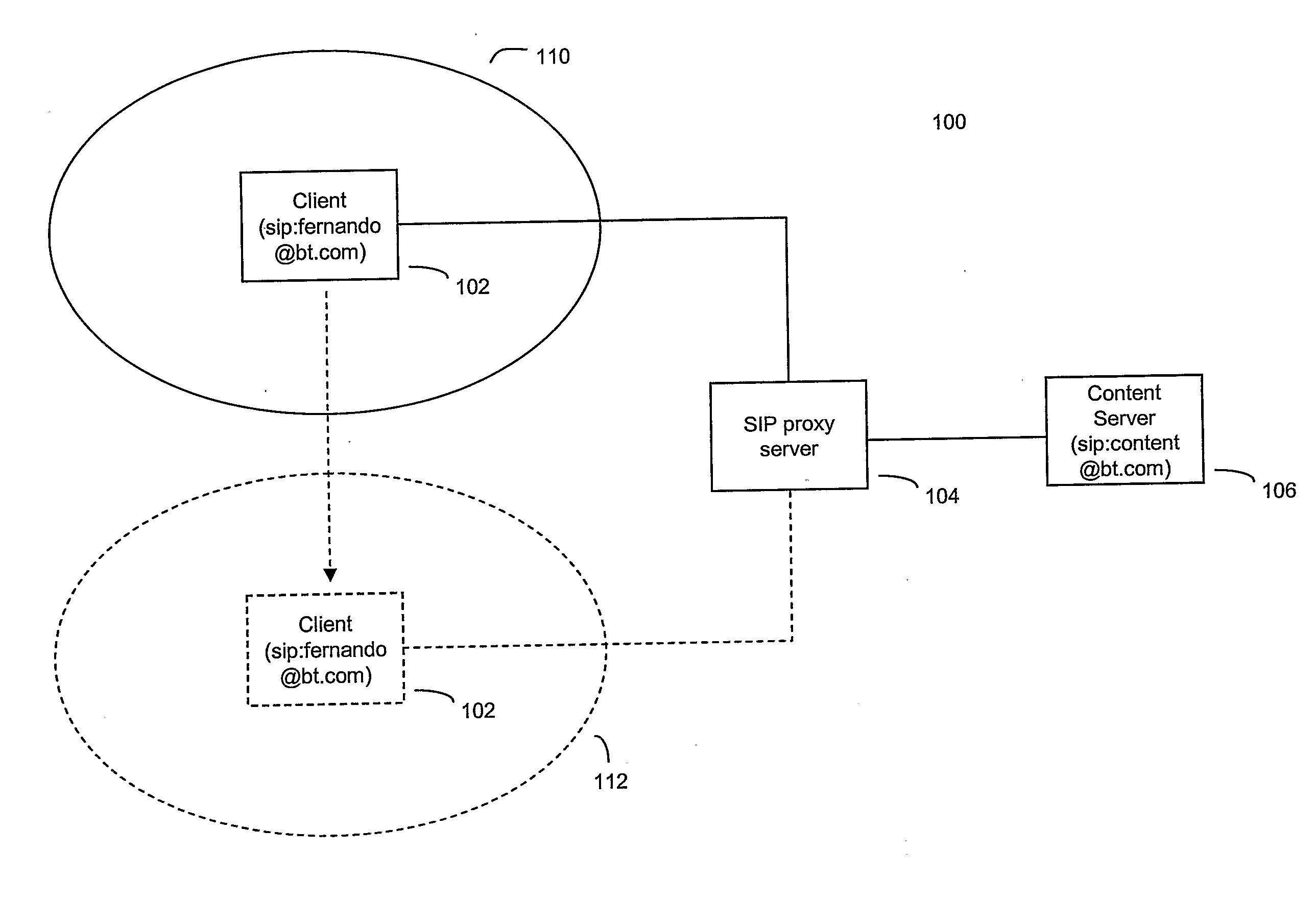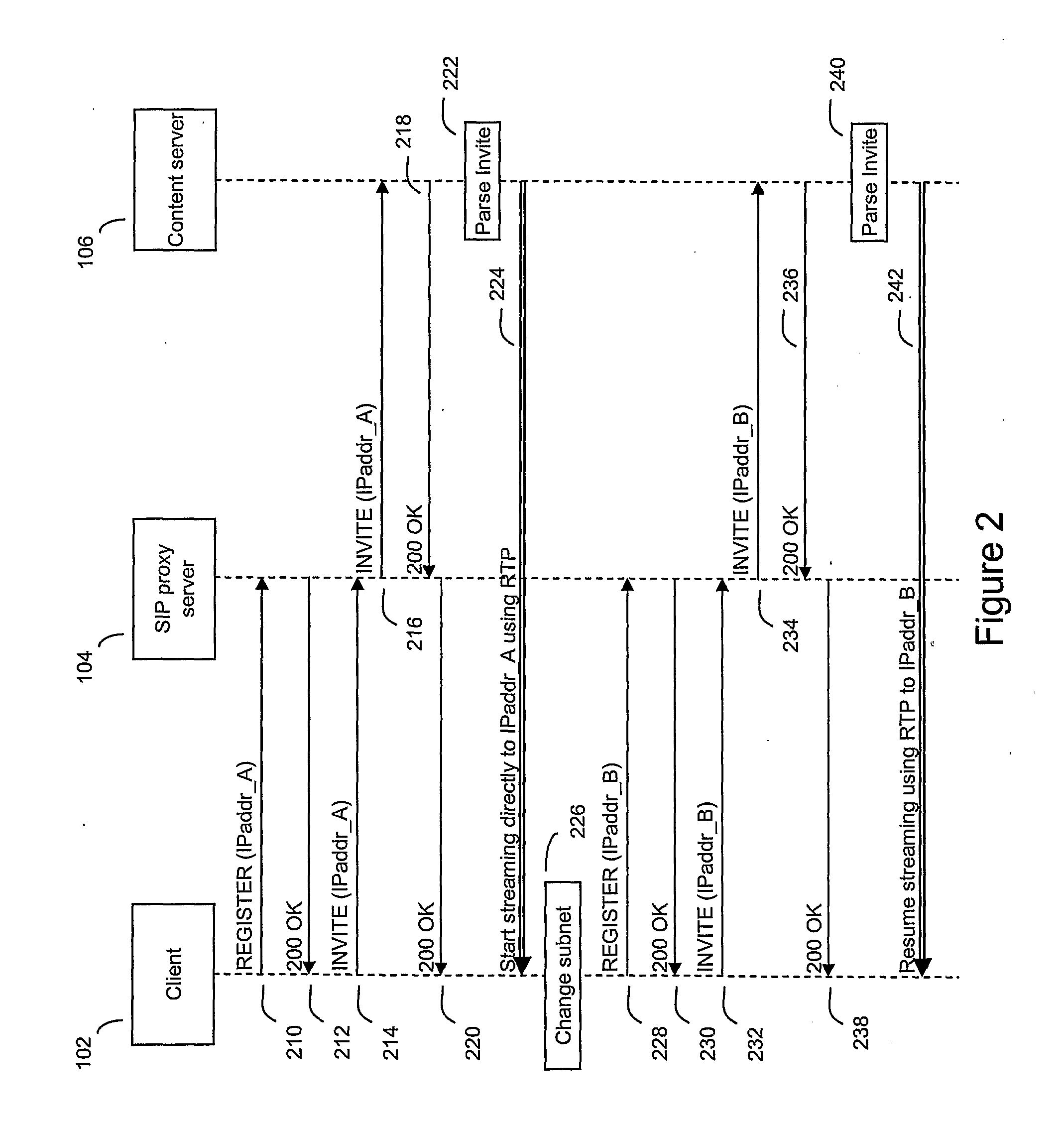Fast handover using sip
a technology of data stream and handover, which is applied in the field of mobile communications network, can solve the problems of data loss, time-consuming, and slow handover process, and achieve the effects of improving security, facilitating management, and being more transparent to the network
- Summary
- Abstract
- Description
- Claims
- Application Information
AI Technical Summary
Benefits of technology
Problems solved by technology
Method used
Image
Examples
Embodiment Construction
[0034]The present invention is described herein with reference to particular examples.
[0035]The invention is not, however, limited to such examples.
[0036]FIG. 1 illustrates one embodiment of the present invention with a network 100 comprising a SIP client 102, a SIP proxy server 104 and a SIP content server 106. The network 100 may be a Wi-Fi network, though a person skilled in the art will appreciate that embodiments of the present invention will apply to other network access methods.
[0037]In this example, the content server 106 is a video streaming server and the client 102 may be a PDA or laptop. These “endpoints” can be varied and are typically based on standard network entities adapted to operate using SIP using a SIP client, such as a SIP phone. Thus, a normal laptop installed with a SIP client application can utilise SIP for establishing and terminating a communication session. In this example, the client 102 has a universal resource indicator (URI) of “sip:fernando@bt.com”. ...
PUM
 Login to View More
Login to View More Abstract
Description
Claims
Application Information
 Login to View More
Login to View More - R&D
- Intellectual Property
- Life Sciences
- Materials
- Tech Scout
- Unparalleled Data Quality
- Higher Quality Content
- 60% Fewer Hallucinations
Browse by: Latest US Patents, China's latest patents, Technical Efficacy Thesaurus, Application Domain, Technology Topic, Popular Technical Reports.
© 2025 PatSnap. All rights reserved.Legal|Privacy policy|Modern Slavery Act Transparency Statement|Sitemap|About US| Contact US: help@patsnap.com



